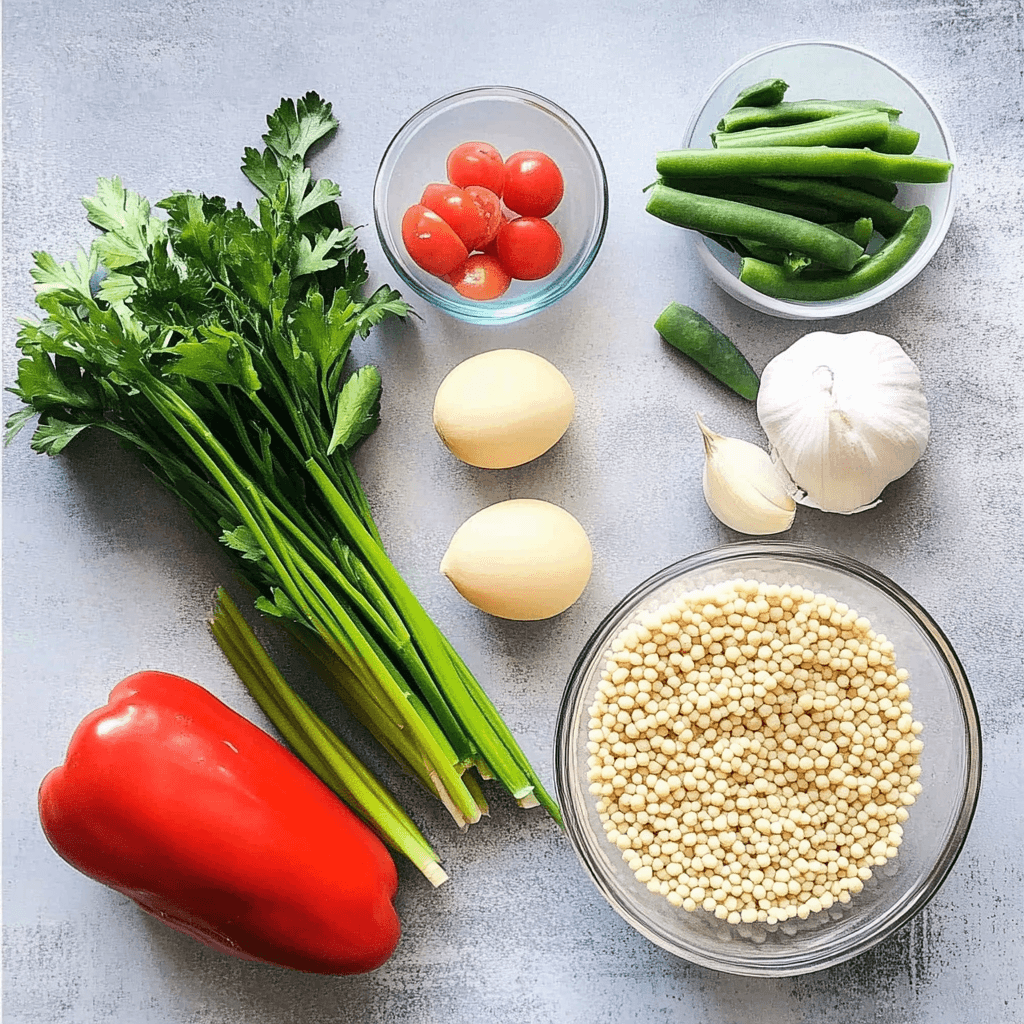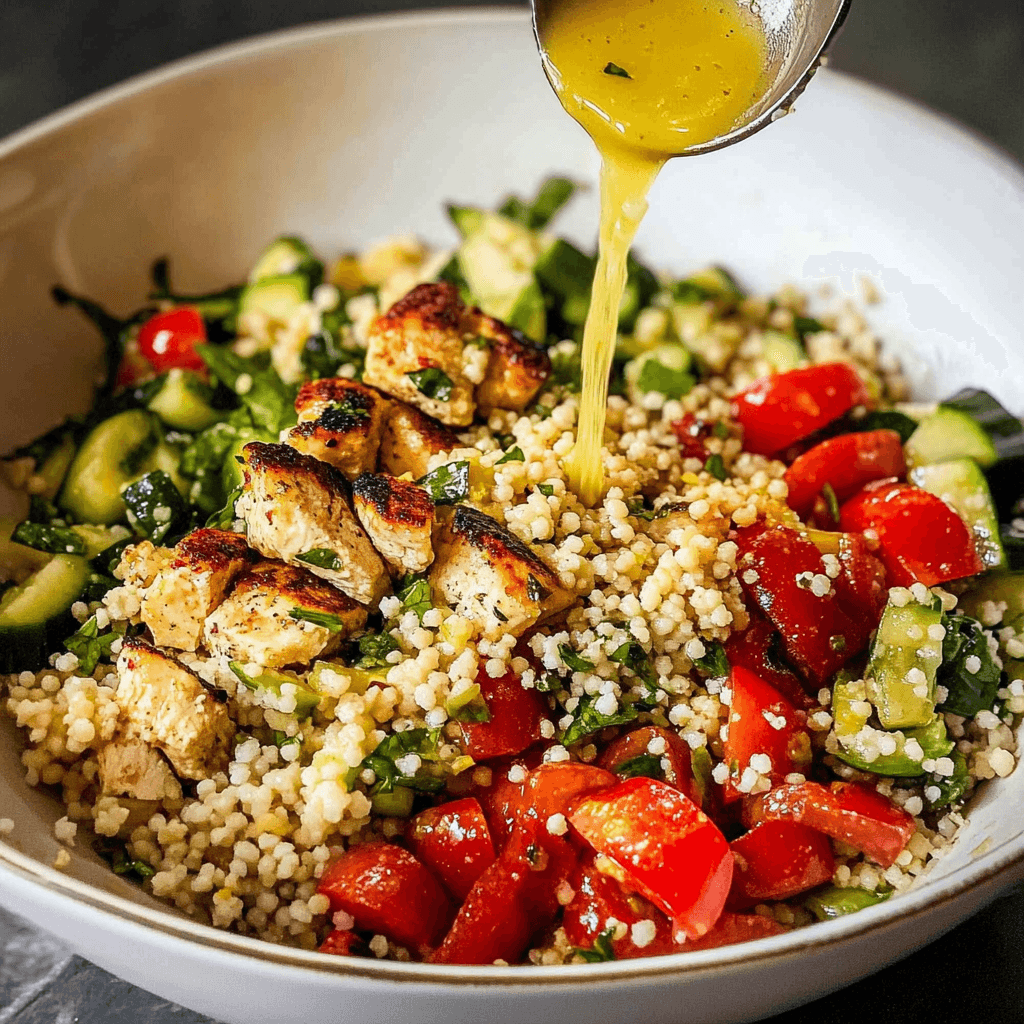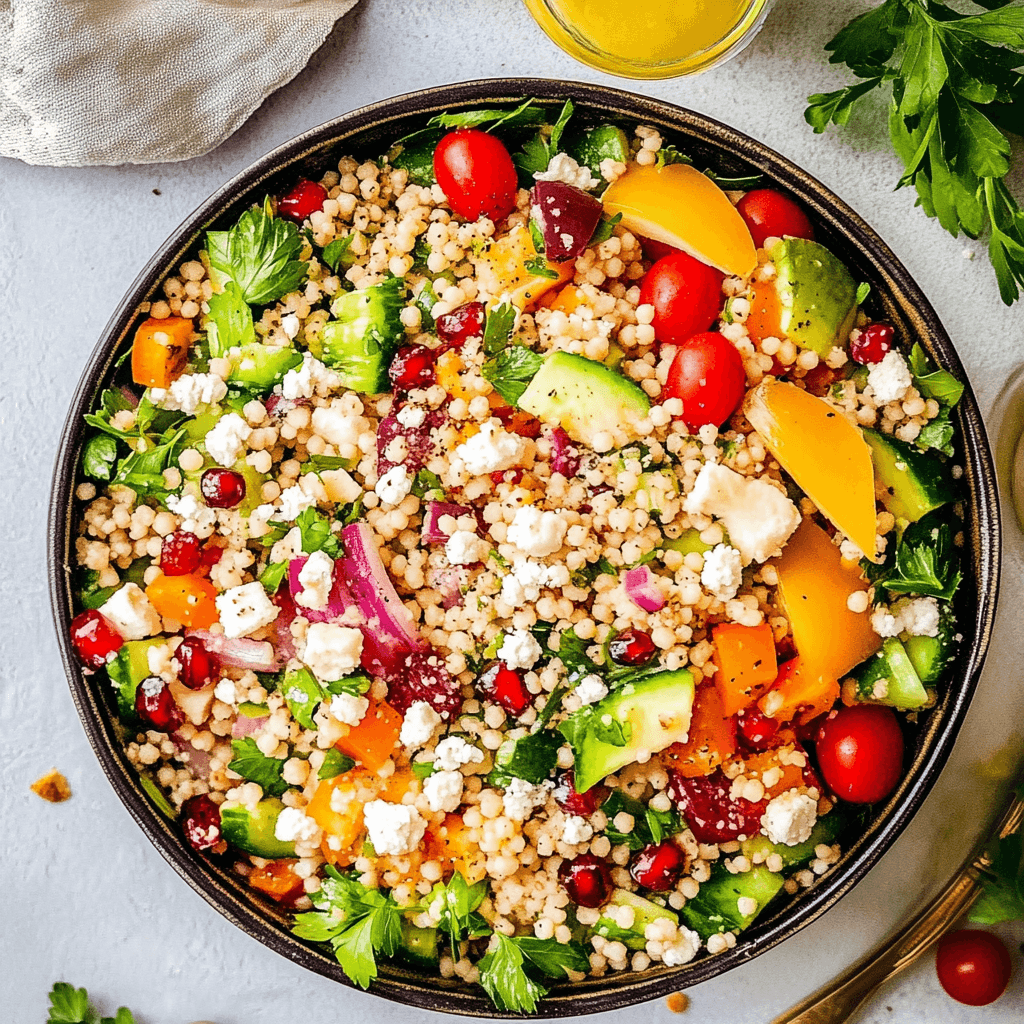Couscous salad is a delightful combination of fluffy couscous, vibrant vegetables, and flavorful dressings, offering a refreshing take on healthy eating. Originating from North African and Mediterranean cuisines, this versatile dish has become a global favorite for its simplicity and adaptability. Whether served as a side dish, a light meal, or a potluck centerpiece, couscous salad caters to various palates and dietary preferences.
The beauty of couscous salad lies in its adaptability to ingredients on hand. You can keep it simple with a handful of fresh vegetables and a drizzle of olive oil or elevate it with gourmet toppings like roasted nuts, dried fruits, and artisanal cheeses. This versatility makes it perfect for both weeknight dinners and special occasions.
Moreover, couscous itself is a nutritional gem, offering a great source of carbohydrates, fiber, and protein. Paired with nutrient-rich ingredients like fresh herbs and vegetables, couscous salad becomes a wholesome, balanced dish that satisfies both your taste buds and health goals.
If you’re intrigued by dishes that blend health and flavor, consider pairing couscous salad with complementary options like a Mexican-inspired chicken rice bowl to create a globally inspired meal.

What is Couscous Salad?
This salad combines cooked couscous with fresh vegetables, herbs, proteins, and dressings. The dish originates from North Africa and has become a staple in many households worldwide. Its versatility makes it ideal for quick meals or elaborate gatherings.
If you enjoy diverse culinary experiences, consider pairing this salad with dishes like Mexican-inspired chicken rice bowls for a vibrant, flavor-packed meal.
Ingredients for Couscous Salad
Here’s a detailed breakdown of everything you need to create a vibrant and delicious couscous salad:
1. Vegetables
Incorporate fresh, colorful veggies to make your couscous salad nutritious and flavorful.
- Cherry Tomatoes: Halved or quartered for juicy bursts of flavor.
- Cucumbers: Diced for a refreshing crunch. Persian or English cucumbers work best.
- Red Onions: Thinly sliced or diced for a sharp, zesty kick.
- Bell Peppers: Use a mix of red, yellow, and orange peppers for sweetness and color.
2. Add-Ins
Enhance the texture and taste of your couscous salad with these add-ins:
- Nuts: Add crunch with toasted almonds, pine nuts, or pistachios.
- Dried Fruits: Raisins, chopped dried apricots, or cranberries provide a sweet contrast.
- Proteins:
- Chickpeas: For a plant-based, protein-packed option.
- Grilled Chicken: Adds a hearty, savory element.
- Feta Cheese: Offers a tangy and creamy finish.
3. Fresh Herbs
Herbs are essential for adding vibrant flavor to your salad. Use them generously!
- Parsley: The classic choice for a bright, earthy taste.
- Mint: Adds a refreshing, aromatic twist.
- Cilantro: For a bold, citrusy flavor (optional, based on preference).
4. The Dressing
Choose the dressing that complements your salad and personal taste:
- Classic Lemon Vinaigrette:
- Ingredients: Lemon juice, olive oil, minced garlic, salt, and pepper.
- Perfect for a light, zesty finish.
- Yogurt Dressing:
- Ingredients: Greek yogurt, fresh dill, lemon zest, olive oil, and salt.
- Ideal for a creamy and tangy variation.
- Balsamic Vinaigrette:
- Ingredients: Olive oil, balsamic vinegar, Dijon mustard, and a pinch of sugar.
- Great for a slightly sweet and rich flavor.
5. Optional Extras
- Olives: Kalamata or green olives for a briny kick.
- Avocado: Diced for creaminess.
- Zucchini or Carrots: Shredded or diced for added texture.

Why Make Couscous Salad?
- Quick to Prepare: Couscous cooks in just 10 minutes.
- Highly Nutritious: It’s rich in fiber, vitamins, and minerals.
- Endlessly Adaptable: Customize with your choice of proteins, vegetables, and dressings.
For an indulgent but complementary side, try a Texan potato salad, which adds creaminess to your table spread.
Types of Couscous for Salads
Understanding couscous types is key to tailoring your salad:
- Moroccan Couscous: Tiny grains that cook quickly and fluff easily.
- Israeli (Pearl) Couscous: Larger, chewier grains ideal for heartier salads.
- Lebanese Couscous: Robust and nutty, perfect for bold flavors.
How to Prepare the Perfect Couscous Salad
A well-made couscous salad is a light, flavorful dish that can be customized to suit your taste. From cooking the couscous to choosing the best add-ins and dressings, here’s a step-by-step guide to help you make a truly perfect couscous salad:
1. Cooking the Couscous
The foundation of any great couscous salad is perfectly cooked couscous. Follow these tips for the best results:
- Choose the right liquid: Use water, vegetable stock, or chicken broth to cook your couscous. Broth adds an extra layer of flavor that water alone cannot provide.
- Proper water-to-couscous ratio: Typically, use 1 cup of couscous to 1 cup of liquid. Adjust the ratio slightly if using pearl (Israeli) couscous, which requires more water.
- Fluff the couscous: After cooking, fluff the grains with a fork to prevent clumping and maintain a light, fluffy texture. Let the couscous cool before adding it to the salad.
2. Essential Ingredients
Vegetables
Fresh, crunchy vegetables are the heart of a couscous salad. Some must-haves include:
- Tomatoes: Dice fresh tomatoes or use cherry tomatoes for a burst of sweetness.
- Bell peppers: Add a mix of colors (red, yellow, green) for visual appeal and crunch.
- Cucumbers: Choose English cucumbers or Persian cucumbers for a refreshing flavor.
Add-Ins
Enhance the salad’s texture and flavor with these ingredients:
- Nuts: Add crunch with toasted almonds, pistachios, or walnuts.
- Dried fruits: Sweeten the salad with dried cranberries, raisins, or chopped apricots.
- Herbs: Fresh parsley, cilantro, or mint brighten the salad and add a Mediterranean touch.
Proteins
To make your couscous salad more filling, include a source of protein:
- Chickpeas: These add creaminess and a nutty flavor while keeping the dish vegetarian.
- Grilled chicken: Slice and season grilled chicken for a satisfying addition.
- Feta cheese: Crumbled feta brings a salty, tangy element to the dish.
3. Dressing Options
A great dressing ties all the elements of the salad together. Try one of these options:
- Lemon vinaigrette: Combine olive oil, freshly squeezed lemon juice, garlic, Dijon mustard, salt, and pepper for a zesty dressing.
- Creamy yogurt dressing: Mix plain Greek yogurt with olive oil, lemon juice, minced garlic, and a pinch of dill or mint for a smooth, tangy topping.
- Balsamic vinaigrette: Use balsamic vinegar, olive oil, honey, and a dash of mustard for a sweet and tangy flavor.
- For more inspiration, explore recipes like creamy chicken spaghetti that feature unique dressing ideas to bring out bold, complementary flavors.
4. Assembling the Salad
- Start by placing the cooled couscous in a large mixing bowl.
- Add your chopped vegetables, nuts, dried fruits, and herbs.
- Drizzle with your chosen dressing and toss gently to combine.
5. Final Touches
Chill: Refrigerate the salad for at least 30 minutes to let the flavors meld together before serving.
Garnish: Add extra herbs, a squeeze of lemon juice, or a sprinkle of toasted nuts for a finishing touch.

Popular Variations
- Mediterranean Couscous Salad
A classic with cucumbers, olives, and feta cheese. - Southwest Couscous Salad
Features black beans, corn, and a cumin-lime dressing. - Sweet Couscous Salad
Combines dates, orange zest, and honey.
Nutritional Benefits
Couscous salad is not just delicious; it’s also packed with nutrients that make it an excellent choice for a healthy diet. Here’s a detailed breakdown of its benefits:
1. Rich in Fiber
- Couscous is made from semolina wheat, a source of dietary fiber. Fiber aids digestion, prevents constipation, and helps maintain a healthy gut microbiome.
- Adding vegetables like cucumbers, tomatoes, and bell peppers to the salad further boosts its fiber content, promoting a feeling of fullness and aiding weight management.
2. Low in Fat
- Couscous itself is naturally low in fat, making it a heart-healthy option.
- By using healthy fats in the dressing, such as olive oil or avocado oil, you can improve the flavor without compromising health.
3. Good Source of Plant-Based Protein
- Couscous provides a moderate amount of protein, making it a suitable base for vegetarian and vegan diets.
- Adding chickpeas, lentils, or tofu to your couscous salad enhances its protein content, offering a complete meal for muscle repair and growth.
4. Packed with Essential Vitamins
- Vitamin C: Fresh vegetables in the salad, such as bell peppers and tomatoes, are rich in vitamin C, which boosts the immune system and improves skin health.
- B Vitamins: Couscous contains several B vitamins, including thiamin, niacin, and folic acid, which are essential for energy production and brain health.
5. Mineral-Rich
- Selenium: Couscous is an excellent source of selenium, a powerful antioxidant that protects cells from damage, supports thyroid function, and strengthens the immune system.
- Potassium: Vegetables like cucumbers and tomatoes contribute potassium, which regulates blood pressure and supports proper muscle function.
- Iron: Adding spinach, arugula, or lentils to your salad can help boost its iron content, vital for oxygen transport in the blood.
6. Low Glycemic Index (GI) Option
- Couscous has a moderate glycemic index, making it suitable for controlling blood sugar levels. Pairing it with protein and healthy fats reduces its GI further, benefiting individuals with diabetes.
7. Supports Weight Management
- The combination of high fiber, low fat, and moderate protein makes couscous salad filling and satisfying. It helps curb hunger and reduces the temptation to snack between meals.
8. Gluten-Free Alternatives for Sensitivities
While traditional couscous contains gluten, alternatives like quinoa or millet can be used to create a similar dish that is safe for people with gluten sensitivities or celiac disease. These alternatives also bring their own unique nutritional benefits, such as higher protein and magnesium content.
Conclusion:
Couscous salad is more than just a dish; it’s a versatile culinary masterpiece that adapts to various tastes, seasons, and dietary needs. Its foundation, couscous, provides a neutral yet satisfying base that pairs beautifully with a wide range of ingredients. Whether you’re crafting a vibrant Mediterranean bowl with olives and feta or exploring a bold Southwest twist with black beans and corn, the possibilities are endless.
This dish isn’t just about taste—it’s a celebration of health and simplicity. The high fiber content supports digestion, while the array of vitamins and minerals keeps you energized. It’s also a meal prep hero, tasting even better after the flavors meld overnight, making it perfect for busy weekdays or elegant dinner parties.
Creative Serving Ideas
- Serve your couscous salad as a light lunch alongside smoked salmon toast for a gourmet twist.
- Pair it with grilled proteins like chicken or shrimp for a satisfying dinner.
- Incorporate seasonal produce to make it a star at holiday gatherings, balancing heavy dishes with its fresh flavors.
Couscous salad also excels in versatility for dietary preferences. Opt for vegan-friendly dressings, or swap couscous with quinoa to make it gluten-free. For those who love sweet and savory combinations, adding dried fruits and nuts can transform it into a unique dessert salad.
By integrating couscous salad into your culinary repertoire, you’re embracing a dish that’s as nutritious as it is delicious. It’s easy to prepare, endlessly customizable, and always a crowd-pleaser. Begin experimenting with ingredients today, and create a signature salad that represents your unique taste. Whether for everyday meals or special occasions, couscous salad will undoubtedly become a cherished favorite!
